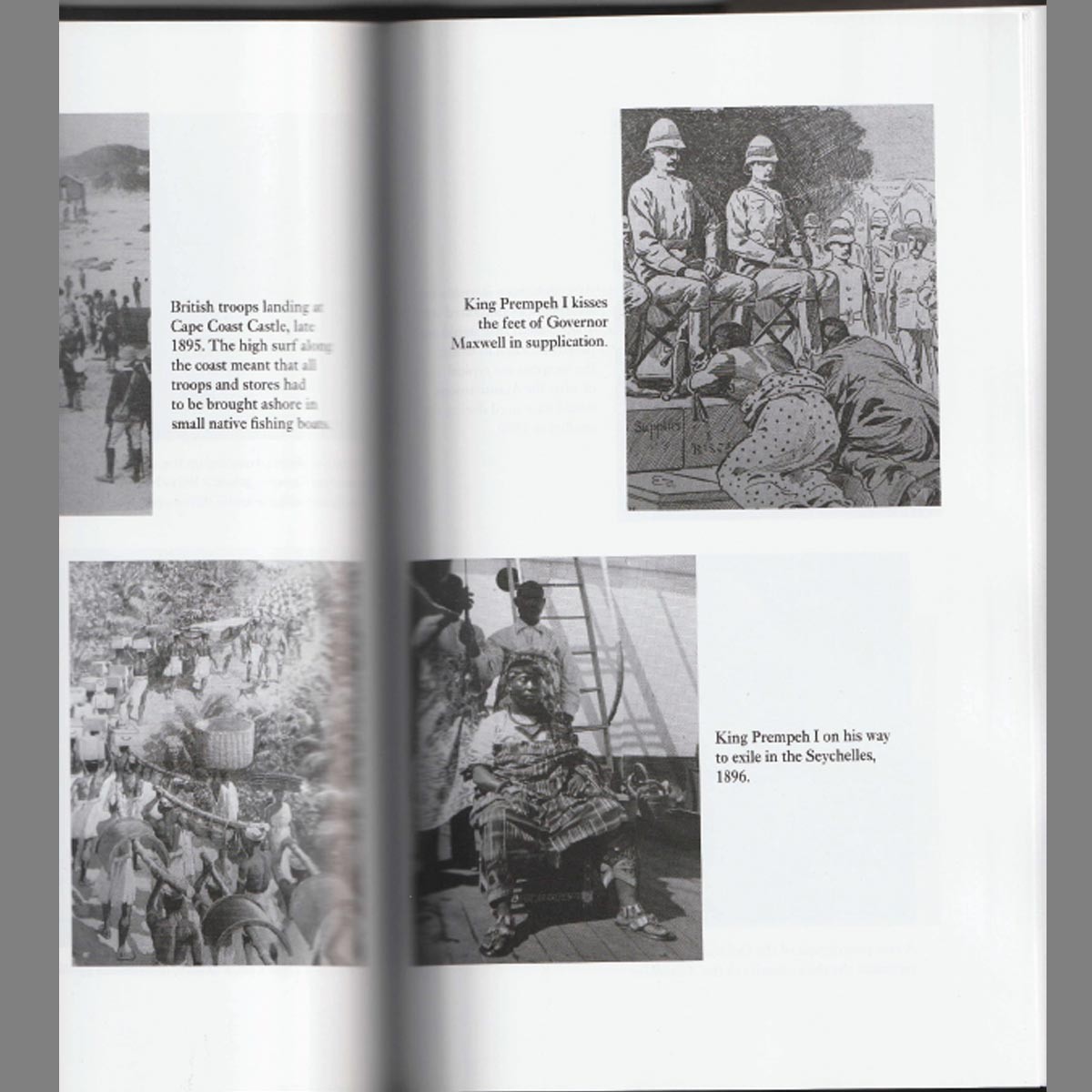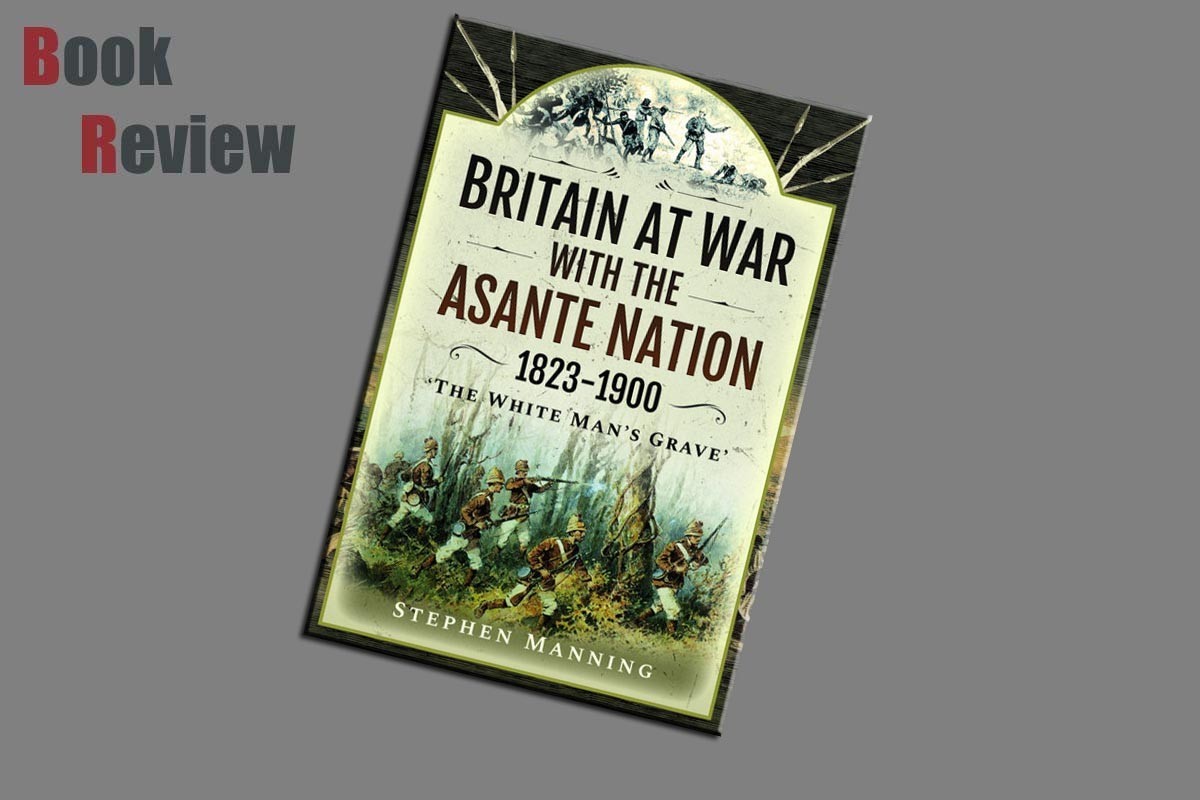
Introduction
The following introduction is taken from the Pen and Sword website:
Britain fought three major wars, and two minor ones, with the Asante people of West Africa in the nineteenth century. Only the Sudanese and Zulu campaigns saw a greater loss of life, both for the British and the indigenous population. Like the Zulus, the Asante were a warrior nation who offered a tough adversary for the British regulars – they were respected for their martial skills and bravery. And yet these wars have rarely been written about and are little understood. That is why Stephen Manning’s vivid, detailed new history of this neglected colonial conflict is of such value.
In the war of 1823-6 the British were defeated – the British governor’s head was severed and his skull was taken to the Asante king who made a cast of gold and this trophy was paraded once a year during an Asante ceremony. The years 1873-4 witnessed the brilliance of Sir Garnet Wolseley in overcoming the logistical problems of sending a large British expedition deep into the jungle where it faced not only a formidable foe but a climate so unforgiving that the region became known as ‘The White Man’s Grave’. Finally, the 1900 campaign culminated in the epic siege of the British fort in Kumasi which must rank as one of the great Victorian escapades alongside the more famous sieges of Peking and Mafikeng.
Stephen Manning’s account, which is based on Asante as well as British sources, offers a fascinating view from both sides of one of the most remarkable and protracted struggles of the colonial era.
Review
This offering from Pen and Sword, looks at the Colonial history of Great Britain in this case, their fight with the Asante Nation from 1823-1900, and authored by Stephen Manning. This is a hard backed book of 172 pages of a matt paper for the written sections, and a high gloss paper for the photographic areas. The contents of this book are as follows:
Part 1: The Rise of the Asante Nation and the First Conflicts in the Anglo-Asante Wars
Early European Contact
The Asante Nation
The Asante Army
Contact and Conflict with the British
Governor McCarthy: British Humiliation
The Battle of Dodowa and its Aftermath
The Governorship of George Maclean
The Reign of Kwaku Dua 1: Peace and Prosperity
A Collapse in Anglo-Asante Relations: Further Conflict
Part 2: Empires Collide: Wolseley’s Expedition of 1873-4
Transfer of Dutch Assets to the British
The Road to War
Invasion
British Plans and Preparations
Wolseley’s Arrival Upon the Gold Coast and First Shots
The British are Coming
The Four-Pronged Attack
The Battle of Amoaful, 31 January 1874
The Dash to Kumansi
Glover’s Expedition
Peace and Laurels
Part 3: The British Dictate
Britain’s New Role
The Weakening of the Asante Nation
The Scramble for Africa
The Bloodless War
The Last Acts of Defiance
The Siege of Kumansi
The Last Campaign
Conclusion
Appendix: Victoria Cross Winners of the Anglo-Asante Wars
Notes
Bibliography
Index
There is an expression that “the winner writes the history” and that may be the reason why many of the actions undertaken by Great Britain during its conquests to create an Empire are selectively covered. This offering from Stephen Manning takes what I would consider to be, a more balanced look at Great Britain’s army and the war it fought with the Asante Nation in Africa in the attempt to expand her empire. The British army of the period was widely respected due to its ability plus its size and that lead to incorporating countries and soldiers from across the empire and making them an effective fighting force. The British could put 500,000 soldiers in the field and unlike many other nations such as Russia could put more of them in the field at the same location. The Royal Navy had nearly twice as many ships as anybody else and had more front line ships than the next three biggest put together.
Despite all of this the battles to expand her colonies in Africa, did not always go her way as they would come up against tribes that had a pure warrior culture such as the Zulus. The Asante Nation was one such warrior nation that fought the British, and beat them in the early 1800s, even cutting off the Governor’s head. This title covers the to and froes between the British and the Asante Nation from both sides very well. What may surprise some, is that the book also includes some period photographs covering the time. One such photograph covers the exile of King Prempeh I to the Seychelles in 1896.
Conclusion
The view of how the British Empire was created, is very much blurred. This offering from Stephen Manning brings some balance to the view on how the British Empire was formed. After all, an Empire is not formed by being nice. A read through this offering shows that despite the British militaries propensity to win battles and wars, was sometimes blunted by military forces that were considered inferior to them, such as the Asante Nation that was still very capable of bloodying their noses. A very informative read.





























